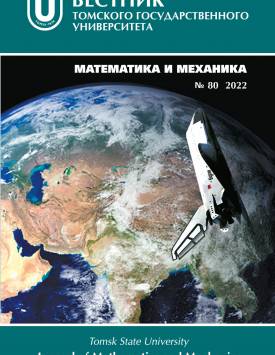Optimization of a program for launching the payload on a specified trajectory
In this paper, the problem of choosing and optimizing a program for launching the payload (PL) into a specified circular orbit is considered. Both direct insertion into the circular orbit and the insertion using an intermediate elliptical orbit are examined. The mass range of the PL, which can be placed into the circular orbit with specified parameters, is calculated. The PL is launched using a medium-class launch vehicle (LV), which is proposed to be a hypothetical ballistic missile withdrawn from service. The LV movement program is divided into two sections: the escape from the atmosphere and the launch section. Both sections use a control program with the pitch angle as a parameter. The optimal parameters for the program are determined. Direct insertion into the circular orbit is revealed to be possible for a very limited range of PL masses. It is shown that the range can be significantly extended if an intermediate elliptical orbit is used. The study results prove that the use of the selected LV allows placing the PL in the specified circular and elliptical orbits. For the formation of the orbital trajectories of the PL launch, it is possible to use an almost invariable parametric class of LV flight control programs.
Keywords
launch vehicle, ballistic missile, payload launch program, optimization criterion, launch into orbitAuthors
| Name | Organization | |
| Glazunov Aleksandr S. | Baltic State Technical University " VOENMEKH " named after D.F. Ustinov | ssan4ekk77@gmail.com |
| Sizova Anastasiya A. | Baltic State Technical University " VOENMEKH " named after D.F. Ustinov | sizova_aa@voenmeh.ru |
| Petrova Irina L. | Baltic State Technical University " VOENMEKH " named after D.F. Ustinov | petrova_il@voenmeh.ru |
References

Optimization of a program for launching the payload on a specified trajectory | Vestnik Tomskogo gosudarstvennogo universiteta. Matematika i mekhanika – Tomsk State University Journal of Mathematics and Mechanics. 2022. № 80. DOI: 10.17223/19988621/80/6
